Click above to start the smoky show!
A few weeks ago, Drew Phillips and I looked at the Autoblog calendar and realized our wildest high school dreams were about to come true. Over the course of five days*, we'd have five rear-wheel-drive cars, 2,486 horsepower**, 2,391 pound-feet of torque, 38 cylinders, three superchargers, five sore clutches and ten badly abused tires.
The stars aligned out here in sunny, Southern California as the penultimate week of March had us driving the 2011 Ford Mustang V6, 2011 Ford Mustang GT, Hennessey V700, Callaway 552SC and 2010 Jaguar XKR Convertible (reviews of the Callaway and Jag are on their way). After four, maybe five seconds of thought, we knew what we had to do. Kill the tires! Kill them all, and let the California Highway Patrol sort 'em out. We're calling our temporary scorched earth campaign Burnout Week. Follow the jump to see the smoke.
* Due to a flat not caused by a burnout, our week ran over to six days.
** Both the Mustang GT and the Hennessey V700 are most likely underrated. Therefore the total horsepower sum for Burnout Week might actually be 2,543 ponies.
Note: we're presenting the cars in order of burnout ease. Meaning that the first car was actually the most eager to light up its tires. The results surprised us.
2011 Ford Mustang V6
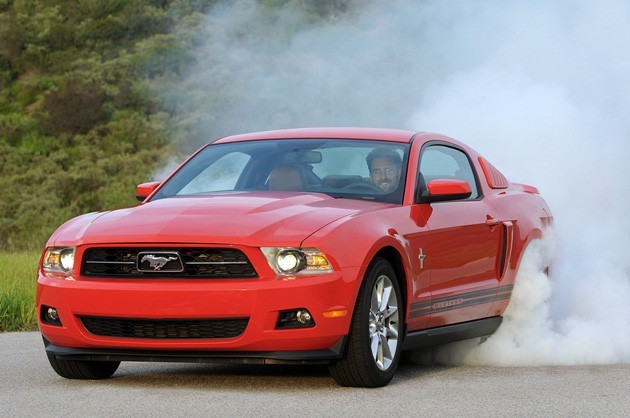
2011 Ford Mustang V6 – Click above for higher-res version of image
The 2011 Ford Mustang V6 is not only over 100 horsepower and 100 torques weaker than the next meekest Burnout Week participant, but it's the only V6 of the bunch. That said, the picture above is our very first burnout attempt of the week. Massively simple. Right toe on the brake pedal, right heel on the throttle and remove left foot from clutch at a medium pace = tons of tire smoke. Since the V6's redline is so lofty (7,000 rpm) and the gearing's relatively high, you don't even have to worry about hitting fuel cutoff. Just mash your right foot in there and smile for the camera. Like all modern cars, there's a traction control system that must be defeated before you can light 'em up. In the case of the Mustang, just hold down the Advancetrac button down for eight seconds and you're good to go. Again, so simple it's addictive.
Hennessey V700
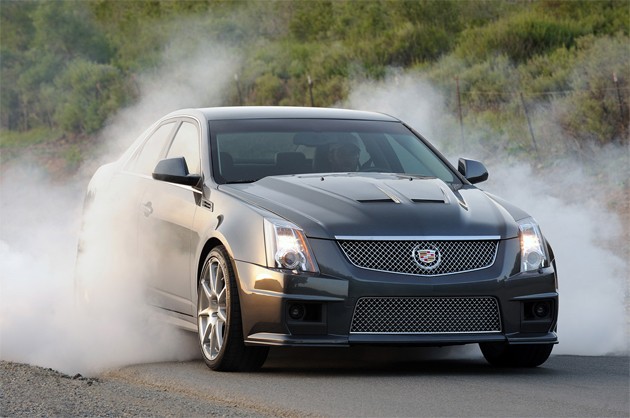
Hennessey V700 – Click above for higher-res version of image
The Hennessey V700 was also frightfully easy to operate. Like the V6 Mustang, you need to first defeat the traction control system, which Cadillac saw fit to hide as a steering wheel button, only the CTS-V's system seemed more difficult to turn all the way off. Also, the monstrous 700+ hp mill in the V700 is also capable of smoking the tires with the traction control fully on, though only just a little. With the nanny off, stand back/wear an oxygen mask. The only reason we're saying the V700 is more difficult to manipulate than the Mustang V6 is that the end results are freaky. The car was fully, 100% engulfed in smoke within three seconds. Smoke was pouring into the cabin after being sucked up by the HVAC system. I rolled it forward the normal five feet or so to clear the smoke, and I still saw smoke pouring out from beneath the hood. For a split second I thought I'd popped a fuel line and the car was on fire. Turns out the Hennessey was just fine, though the massive 305/35/20 Michelin PS2s out back had just lost one of their nine lives. Or two. Pedal technique is identical to the V6, only you'll run out of oxygen before you hit the 6,600 rpm redline. At least it will seem that way...
2011 Ford Mustang GT
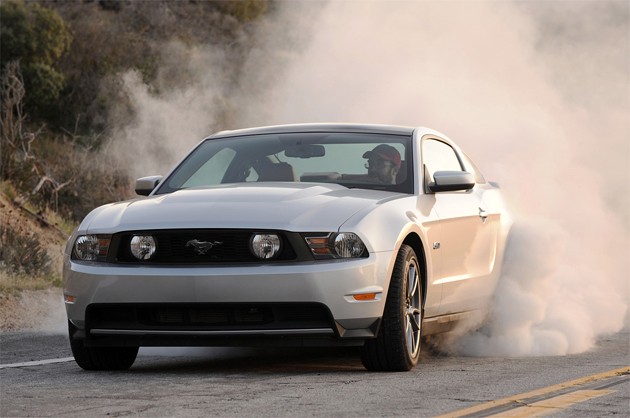
2011 Ford Mustang GT – Click above for higher-res version of image
The 412-horsepower 2011 Ford Mustang GT is the most powerful non-supercharged Burnout Week participant. That said, it's looking more and more like the new 5.0 makes 435 to 440 hp, maybe even 442. Do these numbers surprise us? Not in the least. Just look at all that velvety smoke. So, why isn't the V8 version of the Mustang ranked higher than its weaker V6 sibling? Because its gears are so much shorter that you will in fact hit the 5.0-liter V8's redline. As the car pictured uses Ford's new six-speed manual, the technique is almost identical to what you'd do in the Mustang V6, though you have to modulate the throttle right around 6,500 rpm, which is a little tricky to do with that same foot holding down the brake pedal. Serious burnout artists will switch their left foot to the brake pedal as soon as its done with the clutch, but as the above picture illustrates, you can do it with one foot and one slightly kinked knee. For those who care, yes I was wearing flip flops.
Callaway 552SC
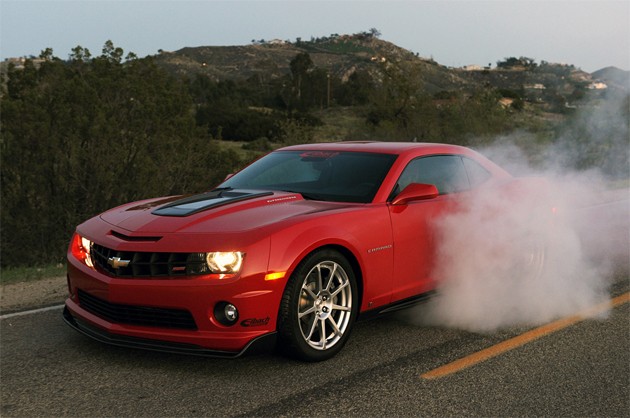
Callaway 552SC – Click above for higher-res version of image
You might think that a supercharged Callaway 552SC (in this case the 552-horsepower SC552) would provide the easiest burnouts of the week. But you'd be wrong. For one thing, we had a problem with location. The route on which we chose to vaporize the tires was thick with onlookers, so much so that at one point a weirdo drove over to ask us if we were arsonists. How do we know she was weird? She was driving a Pontiac Aztek. We were forced to flee locations, find a last minute substitute and nearly lost the light. But aside from being too heavily populated, the big problem was the SC552's transmission. See, the SC552 is an automatic (the slightly more powerful SC572 is a manual) and I'm pretty lousy at slushbox burnouts, especially in modern cars. I always get the feeling that I'm upsetting some line of code somewhere, even with the traction control switched all the way off. Sure, two pedals should be easier than three, but for me, it just isn't. One final excuse, there was a mild breeze when we smoked the SC552's tires, and wind is the killer of huge smokey plumage.
2010 Jaguar XKR Convertible
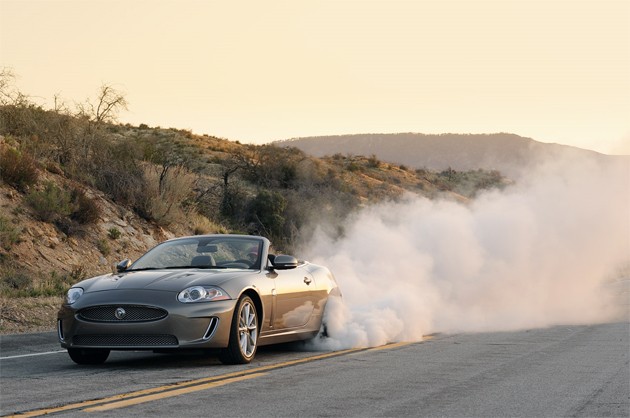
2010 Jaguar XKR Convertible – Click above for higher-res version of image
Last but certainly not least (and quite possibly the best photo of the bunch) is the 510-horsepower, 461-pound-feet-of-torque 2010 Jaguar XKR Convertible. We learned a couple months back that these supercharged Jags are more than capable of shredding the rubber off their rims, but in that case Drew and I "only" had the 470-hp, 424-torque XF Supercharged. We knew whatever stretch of tarmac we took a full monty R-engined big cat to would have hell to pay. But just like the XF Supercharged, getting the back wheels to send out smoke signals isn't as easy as one might think. First of all, you have to hold the traction control button down for what seems like a full minute (in reality it's close to ten seconds, but longer than every other Burnout Week car). Not only is it an automatic (I've already explained my handicap), but you have to put the suspension in dynamic mode to activate the high-tech limited slip differential, the transmission in Sport mode and blip the left paddle once to keep the car stuck in first gear. Even then, some ghost in the machine fights you, not wanting you to treat a $102,000 example of why British cars do in fact rule like you might a '72 Chevelle. Still, all that rubber eventually gives in to all that motor. Oh, and like in the Mustang 5.0, I'm wearing my dirty-old flip-flops.
We hope you enjoyed our first ever Burnout Week one scintilla as much as we enjoyed making it!


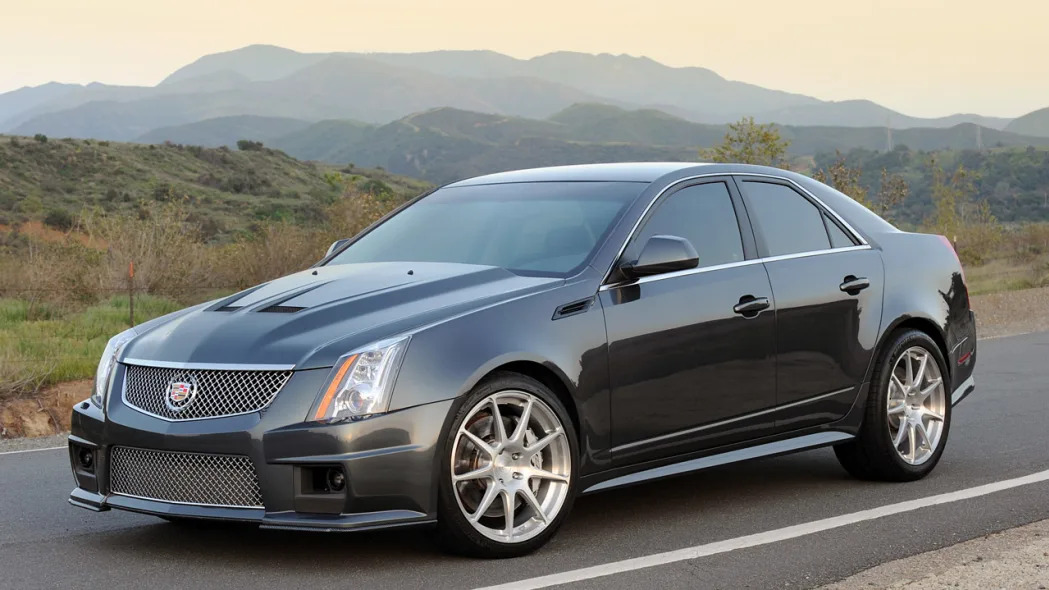
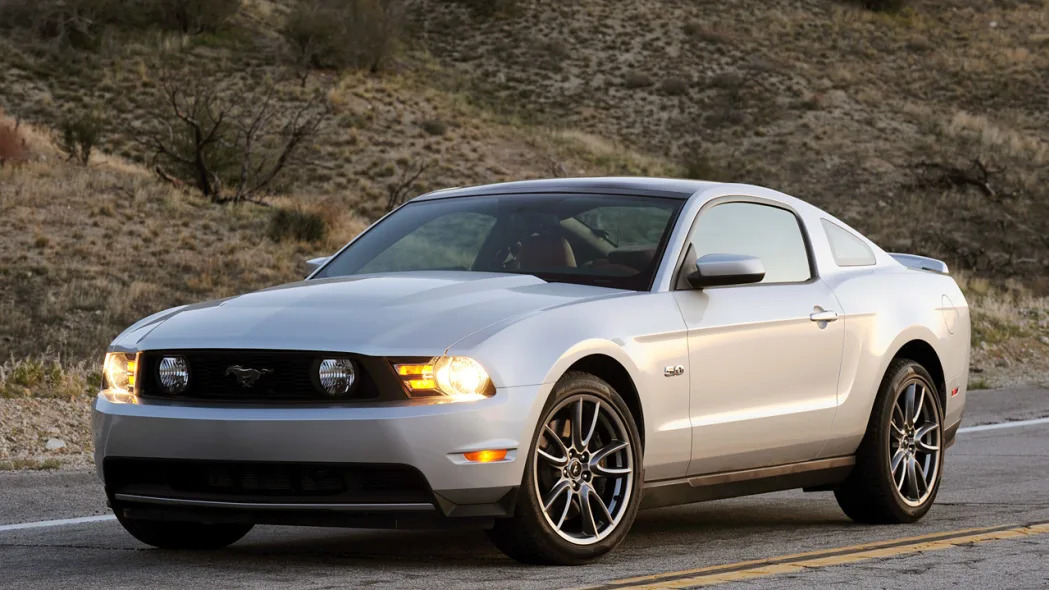
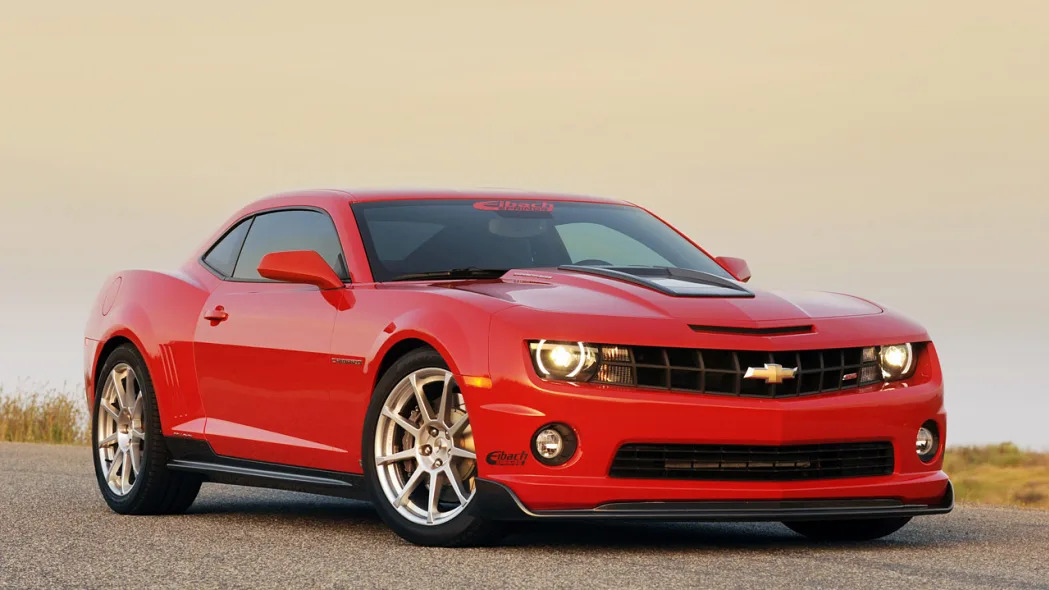
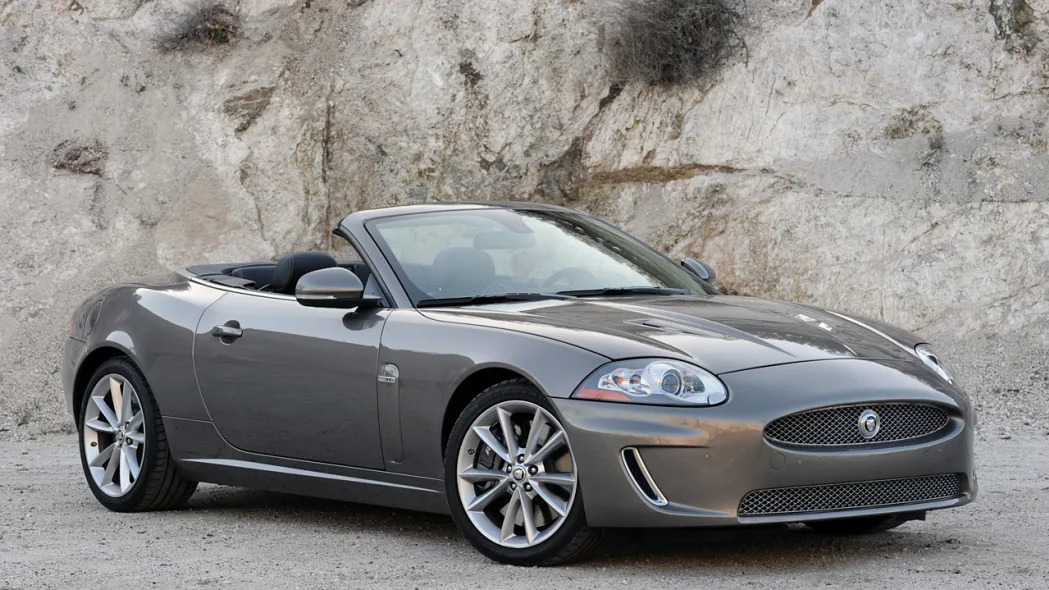

Sign in to post
Please sign in to leave a comment.
Continue